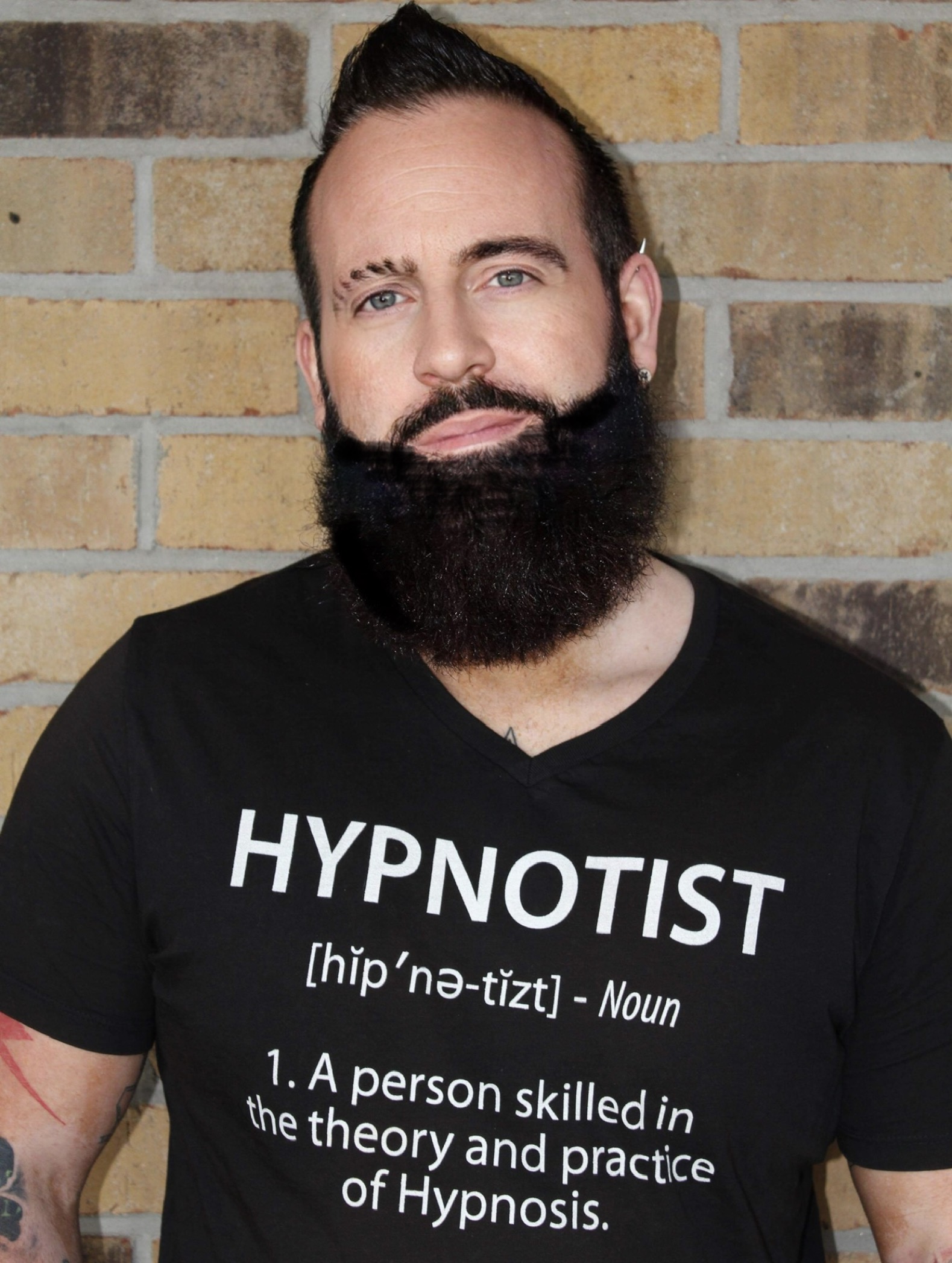
I’m going to show five ways to interrupt, to overcome cravings, whatever they may be. First one is bilateral stimulation. Now this technique involves stimulating both sides of the brain to stop anxiety. And I tend to think that when people are addicted to things it’s because cravings seem to act like anxiety in the brain. And this is a really, really simple technique to use. So what I ask you to do is this, imagine that that anxiety, that craving is there, notice where it is in your body and rate it on a scale of 1 to 10. Now simply pass a water bottle, a ball, your cell phone, any objects, pass it back and forth, hand to hand, making sure that your hands cross the midline point. What you’re doing here is you’re stimulating both hemispheres of the brain.
So do this for a moment and notice what happens. Check in with yourself after a few seconds, 30 seconds, a minute of doing this. Take a deep breath and check in. You’ll notice that the anxiety or the craving has dissipated, maybe completely or maybe significantly. This is because both hemispheres of the brain have been activated and are spreading blood and electrical impulses throughout the body. And this actually floods your association and diffusing it. That’s why it work. And shout out to Melissa Tiers where I get many of these techniques today. Melissa Tiers, you can check her books out, “Integrative Hypnosis” which is great and many other courses. She is a great teacher, that’s where I’m getting most of this stuff today, I recently did a course with her.
Another one is peripheral vision or stop the world. Now what you do is you pick a point in front of you to stare at. And slowly begin to expand your peripheral vision to include all the spaces around that spot. Now expand your vision even further to the sides, all the way to the ceiling and down to the floor. Expand it even more allowing your visual field to open so you can imagine almost becoming aware of the space behind you, 180 degrees to 360 degrees. This might feel a bit strange at first, but by practicing this a few times, you’re gonna notice a general calm comes out of your mind and body as you realize your internal dialogue, i.e. that chatter inside you has stopped.
Sometimes just knowing that you can press the pause button on the cravings by stopping the self-talk that keeps it going, as well as the anxiety that leads to it, it’s a pattern interrupt that often shifts you out of the, “I’ve got to have this now state.” There’s an interesting thing about going into peripheral vision as I’ve talked in another podcast or the learning state as they call it, NNLP or [inaudible 00:04:48] as they call it in a Hawaiian spiritual spirituality of Huna, is when you put your awareness completely outside of yourself, it’s impossible to have a negative emotion. Now you can shoot back in and go into peripheral vision which is focusing on that one spot shooting back into your brain. You can feel negativity all you want. But truly when your awareness is outside and you’ve expanded your awareness, you can’t feel a negative emotion, i.e. you can’t feel a craving or anxiety. It’s the craziest thing. Pause this podcast now and test it out.
Hey, welcome back. Next one is heart cohesiveness. And this technique is adapted from the work of the HeartMath Institute, which is a group of doctors and psychologists who are studying heart rate cohesiveness and its effect on mental and physical health. It stimulates the vagus nerve to down regulate the system to create a parasympathetic balance. Start by bringing your awareness to your heart, and as you do so imagine breathing in deeply, in and out from your heart. You might want to hold your hand over your heart to keep your awareness there as you breathe through it. Some people visualize the energy moving through the heart. The heart is the strongest emitter of electronical magnetic energy in the body. By doing this exercise, you begin to entrain your brain into a cohesive and more relaxed brain, wave state.
You can find out more about this by going to the HeartMath Institute. Go ahead, try this. Pause the podcast and come back. All right, welcome back. The next technique I’d like to share with you is a draw dropping moment. Another quick way to begin to take power away from the craving or the anxiety is to create a jaw dropping experience. Take a moment to relax your jaw as much as you can. Loosen it even more and imagine it drop into the floor. Doing this stimulates the vagus nerve which carries information from the nervous system to the brain, keeping it informed about what the body is doing.
When you drop your jaw, you’re stimulating the parasympathetic nervous system to counteract the fight or flight or freeze response. And you are also encouraging the lungs to reach for a nice deep breath. Creating a flood of biochemicals associated with the relaxation response. So just relax your jaw, take a deep breath in, pause and count for free and exhale twice as long, through the nose. And when you inhale deeply, put your hand on your belly and feel it rise. This ensures that you’re breathing from your diaphragm. Some people find that by inhaling for a count of four, pausing for three and exhaling for eight, that they’re able to keep their mind from ruminating as they allow the relaxation response to cohese or cohere with they’re breathing. This is from Melissa’s work personally in the HeartMath Institute.
Personally, what I found is what I call the 7/11 breathing, which is you breathe in for a count of 7, and you breathe out for a count of 11. Helps to switch people from sympathetic nervous system, i.e. fight, flight or freeze into the parasympathetic nervous system, which is far more a calm, balanced state. But both seem to work. It’s just, that’s my preference. And the fifth tool I’d like to share with you today on how to come out of craving, to interrupt that craving addiction pattern is shifting prospectus. Now, as soon as you feel yourself having a craving or anxiety, locate where it is in the body. And as soon as you find it, notice the shape or other qualities that it’s playing out with. If all you do is you change the shape and you shrink it down, just notice what happens.
Imagine it as a color, what color does it feel like? Now what color would feel better? Imagine as you change the color to one that feels better, that the cravings change into something else. What’s it changed into? Another way of feeling better is to imagine dropping right to the center of that feeling and breathing through it. Notice what happens as you drop to the center and ask yourself, if this was a message from my unconscious, what is it? And if there were a lesson here, what can I learn from this? Now you could imagine this craving as a pebble. Now imagine that pebble amongst many on a wide expansive beach. Now imagine that beach on an island, and that island in an ocean, on a planet, in a galaxy. And notice how you feel now.
So those are five very, very quick tools that you can use to pull you out of addiction, to pull you out of cravings, to pull you out of anxiety. There’s the bilateral stimulation that again floods both hemispheres of the brain, which gives you more balance. There’s peripheral vision, which is stopping the world when you focus on something outside of you and allow that awareness to go to both sides of view from the top to the bottom of the ceiling, to the floor, all the way back to 360 degrees. When you put all your awareness outside, you cannot feel a negative emotion. There’s the heart cohesiveness from the HeartMath Institute where you imagine breathing through your heart for a count of 7, breathing in a count of 11.
There’s the jaw dropping moment where it’s really, really simple. But don’t confuse the simplicity of it for its effectiveness. It’s simply dropping your jaw, when you do that, the vagus nerve which sends information from your nervous system to your brain, it relaxes and takes you from parasympathetic nervous system which is craving, which is fight, flight or freeze to sympathetic nerve…excuse me, I’m gonna rephrase that from sympathetic nervous system which is fight, flight or freeze, or your cravings on the bad stuff you don’t wanna feel, to parasympathetic nervous system in which more calm, more balanced, relaxed, and more control. And then there’s a final one, which is the shift in prospectus which is essentially imagine the craving, the addiction, the pattern, the anxiety is a shape change, and the shape change, and the color, change in the energy, change in how it feels and then putting it somewhere else in your body will change that for you.
You can use any of those, you can use all five of those to see which one works for you. So you have more than enough to be getting on with there, to interrupt those old patterns
Always Believe,
Luke Michael Howard CHT
Toronto and Ottawa Clinical Hypnotist




